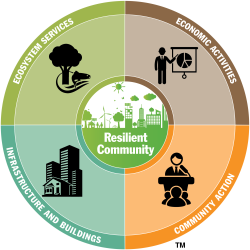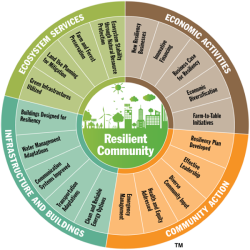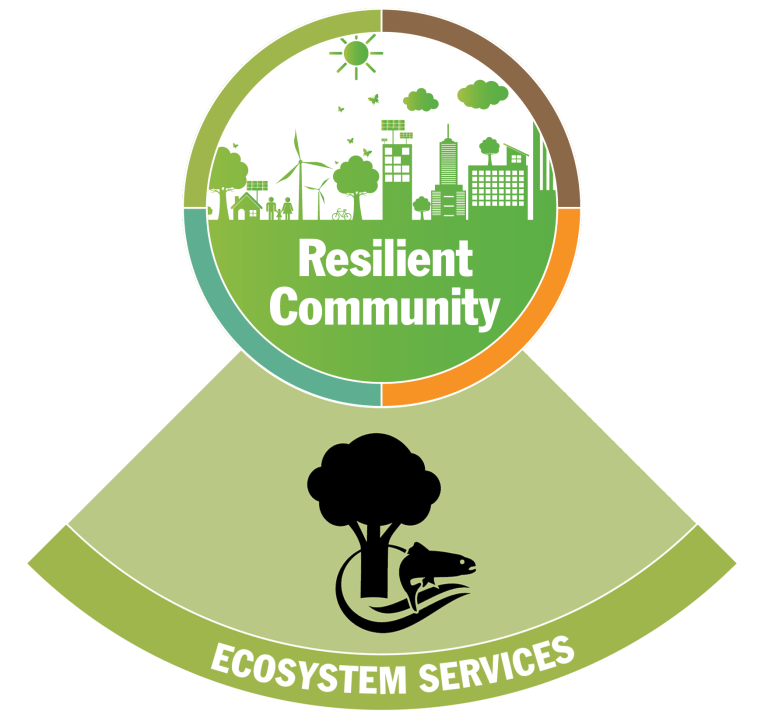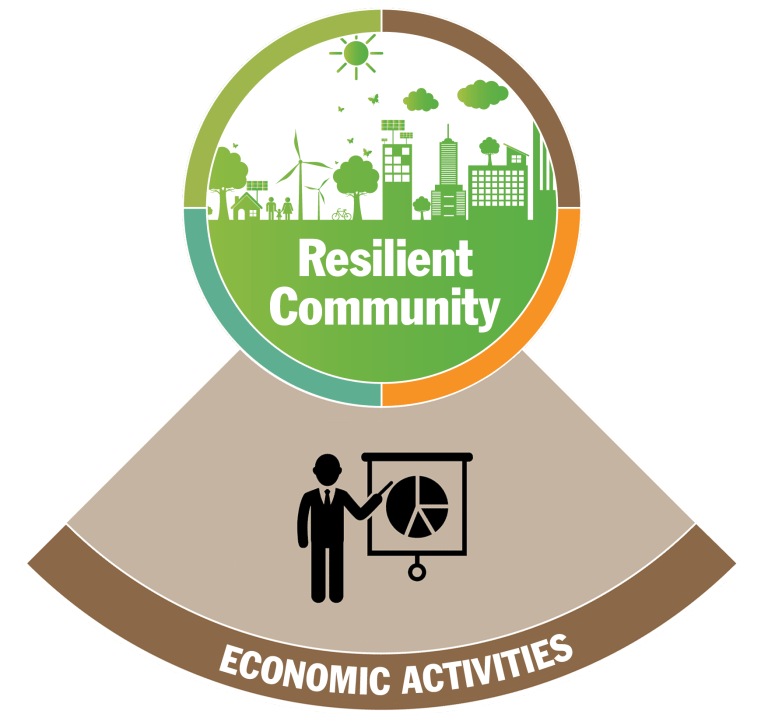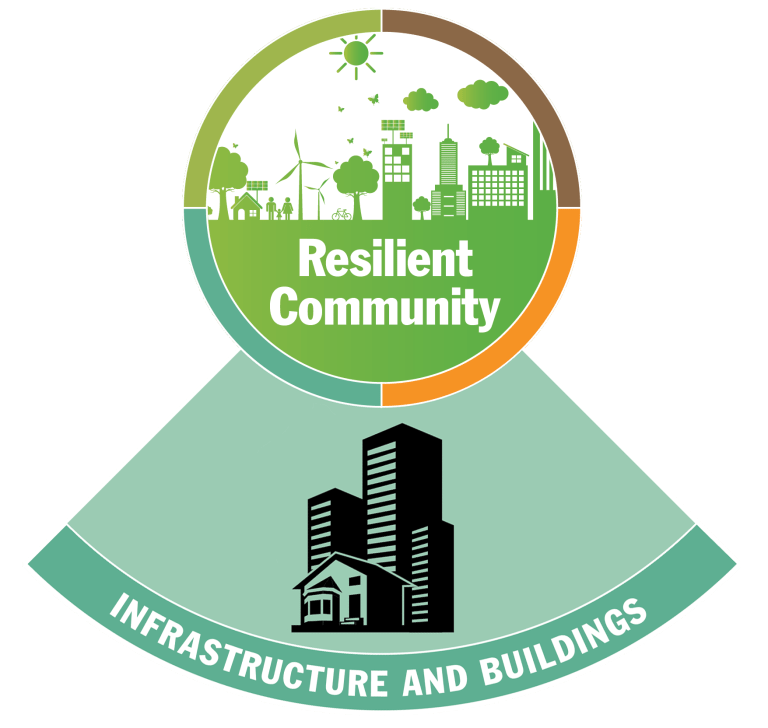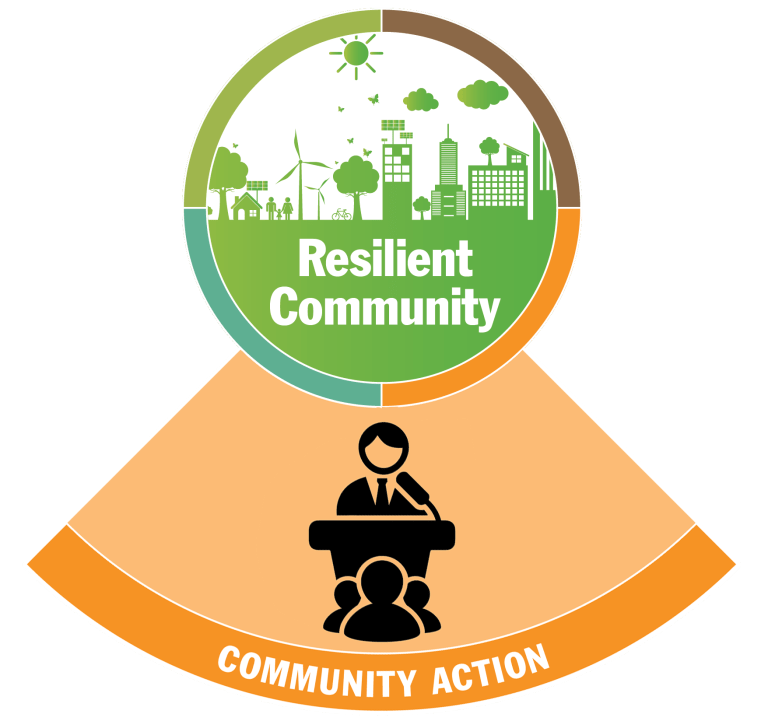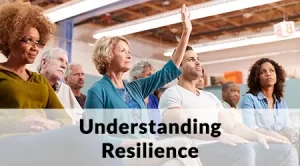Because each community is unique, there is no “one size fits all” solution for resilience. Resilience planning involves identifying a community’s individual strengths, and analyzing existing weaknesses in its ability to withstand natural and man-made disasters, public health challenges, and socio-economic stressors.
Resilient Virginia has identified four key resilience components that communities need to analyze for strengths and weaknesses — Ecosystem Services, Economic Activities, Community Action, and Infrastructure and Buildings.
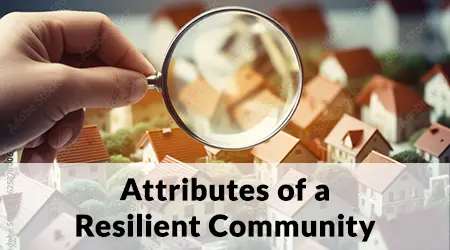
A Deeper Look at the Attributes of a Resilient Community
Ecosystem Services
Ecosystems provide benefits and services that are essential to human survival including food, water, clean air, and building materials. Healthy ecosystems can help protect communities from the impacts of extreme events like flooding, heat, drought, and wildfire; as well as provide recreational and employment opportunities.
Communities must incorporate protection of ecosystem services into their land use and other plans in order to increase resilience. Green infrastructure, farm and forest preservation, land use, and natural resource protection are ecosystem service elements that communities should consider in their planning.
Economic Activities
The health of a community’s economy can be greatly impacted by disasters and other chronic stressors, so a holistic approach to resiliency must incorporate protections for businesses, employers, and employees and the infrastructure that supports them. Communities can weave resiliency goals in their Comprehensive Economic Development Strategies (CEDS); as well as aligning their CEDS with a region’s Hazard Mitigation Plan.
Diversifying economic opportunities, bringing in new resiliency businesses, and focusing on farm-to-table programs are additional strategies that communities can use to become economically resilient.
Infrastructure and Buildings
Design decisions for buildings and communities will significantly impact local and regional resilience. Designers, owners, and operators of residential, institutional, and commercial structures should strive to incorporate passive and active survivability concepts into new and renovated structures.
Community planners and developers should incorporate systems that will ensure continuity of operations in water management, transportation flow, energy service, and communication systems against a variety of risks.
Community Action
Resiliency planning must incorporate, to the extent possible, the priorities of the entire community with a particular focus on the needs of the most vulnerable segments of the population. Therefore, planners must provide diverse ways for the community to engage in the planning process and engage all interested stakeholders including residents, business owners, community groups, community leaders, educational institutions, etc.
Stakeholders and community leaders must be properly informed about the risks they face, potential remedies, and funding opportunities; and then given the opportunity to provide feedback and ideas for potential solutions.

